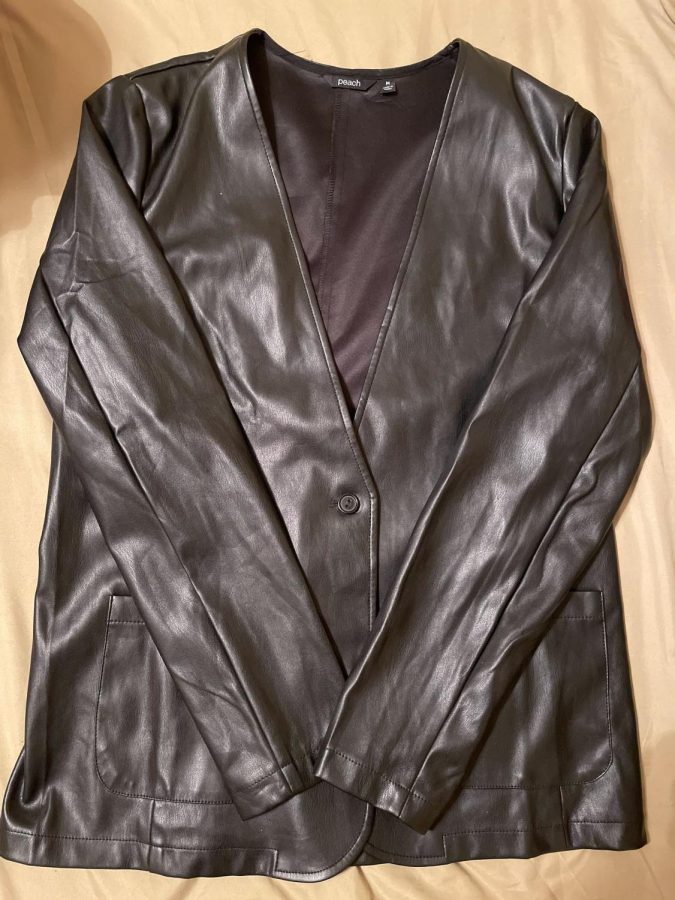OPINION: Here are the best and worst fashion trends of 2022
January 19, 2023
In 2022, we saw a lot of platform shoes, mini-boots, maxi skirts, oversized pantsuits and chain belts. Each year, new trends are crazed over by consumers, causing other trends to be dropped. Personally, I am guilty of hopping on a trend. One of the biggest trend comebacks of the year was wide-leg pants, specifically “flare leggings.” I was so excited about this trend because they are the perfect combination of yoga pants and leggings, and a comfier alternative to leggings.
While there’s nothing wrong with experimenting with fashion and hopping on the latest trend, it is notable to consider the harm of trend cycles. Are trend cycles leading to fast fashion and causing people to have a negative image of themselves if they don’t conform to the trend?
Fast fashion is typically described as clothing that is sold at very low prices by a company that causes harm to the environment, animals and its workers. Fast fashion usually targets trendy clothing. While affordable fashion is hard to come by, and the brands that some of these trends come from, such as Aritzia and UGG, can be very pricey, fast fashion may not be worth hopping on the trend cycles. We’re seeing this clothing everywhere, and it seems like everyone has it. The top brands see an item is trending and market it very high. This leads the average consumer to turn to websites such as SHEIN, which is known for fast fashion, to feel included in society’s trends.
The impact of fast fashion on the environment includes a large amount of water usage, plastic microfibers and pollution. The fashion industry uses a large amount of water, and fast fashion contributes to that by producing mass amounts of product at a time. To sell clothes at low prices, synthetic materials are used. These contain pieces of non-degradable plastic, creating a lot of textile waste. Fashion companies also generate carbon emissions, which lead to pollution in water sources.
The simple solution would be to tell consumers to stop buying from those companies. However, we can’t. Affordability is what keeps fast fashion alive, and a lot of people are unable to buy clothes from sustainable, more expensive brands. What we can do is suggest brands that are more sustainable and produce those same trendy products.
For example, before going straight to the cheapest website, we can research other options. When it comes to flare leggings, it’s hard to find ones that influencers are wearing for less than $70. An alternative is Old Navy, which has been selling flared leggings at affordable prices for years. Is Old Navy a perfect, sustainable brand? No. However, it is a step up. The company has even started to incorporate recycled materials into its products.
Trend cycles are not only causing harm to the environment with fast fashion. Social media is where a lot of these trends start. From certain body types being idealized to trending “what I eat in a day” videos, people of all ages have access to seeing the latest trends and who’s wearing them. Trend cycles can be toxic by putting pressure on people to conform to the body type or certain look that is “in.”
2022 introduced a lot of great trends. I find myself falling into trend culture and wanting to purchase the more affordable brand for a product that I see everywhere. However, I think it’s important to try our best to stay aware of fast fashion. That doesn’t mean that it is realistic to tell everyone not to buy from certain companies due to affordability. I think that with trends, it’s easy to see something and instantly want to buy it.
But there’s no rush.
It’s as simple as a google search to see what kind of company you are buying from and what kind of practices they support. In a perfect world, there would be a sustainable brand that uses all recycled materials and sells clothes for the lowest prices. However, that is unrealistic. All we can do is take a step in the right direction and buy more sustainably, one purchase at a time.
Audrey Trevarthan is an opinion writer. Contact her at [email protected].













